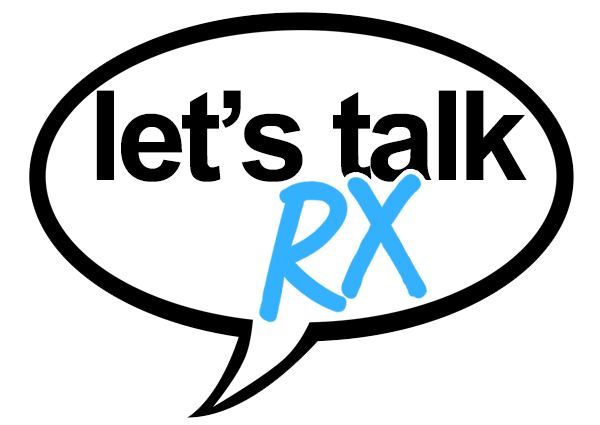When a child receives an inflammatory bowel disease diagnosis, families often wonder: what now? The good news is that pediatric IBD treatment has advanced remarkably in recent decades. Today’s approach focuses not just on controlling inflammation but on ensuring children achieve normal growth, development, and quality of life despite their diagnosis.
Special Considerations in Treating Young Patients
Treating IBD in children requires a fundamentally different mindset than adult care. Medication dosing must account for growing bodies, while treatment goals extend beyond symptom control to include proper development. Perhaps most importantly, the approach must consider the long-term implications of beginning IBD therapy at a young age.
“When we treat a seven-year-old with Crohn’s disease, we’re potentially looking at decades of therapy ahead,” explains Dr. Marla Dubinsky, Chief of Pediatric Gastroenterology at Mount Sinai Hospital. “This means weighing both immediate benefits and long-term safety in ways that differ from adult care.”
The pediatric IBD treatment toolkit includes several categories of interventions, each playing important roles in different scenarios.
First-Line Approaches: Nutritional Therapy Shines
One of the most distinctive aspects of pediatric IBD treatment is the prominence of nutritional therapy, particularly for Crohn’s disease. Exclusive Enteral Nutrition (EEN) has emerged as a remarkably effective first-line treatment that avoids medication side effects entirely.
EEN involves drinking specialized nutritional formulas that meet all dietary needs while giving the intestines time to heal. For 6-8 weeks, these formulas replace all other food, essentially providing gut rest while maintaining perfect nutrition. The results can be remarkable:
Healing Without Drugs: Studies show EEN induces remission in 80-90% of children with active Crohn’s disease, comparable to steroid therapy but without the growth-stunting side effects.
Growth Benefits: Beyond controlling inflammation, EEN provides concentrated nutrition that helps children make up for growth deficits.
Gut Microbiome Reset: Evidence suggests EEN may help normalize the intestinal bacterial balance that’s often disrupted in IBD.
While highly effective, EEN presents practical challenges. Drinking large volumes of formula and avoiding all other foods for weeks requires significant commitment from both children and families. Some centers offer nasogastric tube feeding to help overcome these hurdles, particularly for younger children.
After the initial treatment period, many families transition to partial enteral nutrition approaches, where formula supplements a carefully planned diet. Emerging research is also exploring modified dietary approaches that might be more sustainable long-term while maintaining benefits.
Medication Approaches: Pediatric Precision
When medications become necessary, several categories play important roles in pediatric IBD management:
Anti-Inflammatories: Medications like mesalamine and sulfasalazine help control mild to moderate inflammation, particularly in ulcerative colitis. These medications, which work topically in the intestine, often have favorable safety profiles for long-term use.
Immunomodulators: Drugs like azathioprine, 6-mercaptopurine, and methotrexate modify immune response to reduce inflammation. While effective, these medications require careful monitoring for potential side effects, including impacts on blood counts and liver function.
Biologics: These targeted therapies represent a major advancement in pediatric IBD care. Medications like infliximab, adalimumab, and ustekinumab precisely target specific inflammatory pathways. For many children with moderate to severe disease, early introduction of biologic therapy has become standard practice, as research indicates better long-term outcomes with this “top-down” approach rather than gradually escalating therapy.
Corticosteroids: Once a mainstay of treatment, steroids are now used more judiciously in pediatric IBD due to concerns about growth impacts, bone health, and other side effects. When needed for severe flares, the goal is typically short-term use with a clear tapering plan.
The timing and combination of these treatments has evolved significantly. While previous approaches often started with milder treatments and gradually escalated (the “step-up” approach), many centers now employ “accelerated step-up” or even “top-down” strategies that introduce more potent therapies earlier to prevent disease progression and complications.
For children with ulcerative colitis who don’t respond adequately to other approaches, newer oral options like JAK inhibitors (such as tofacitinib) are expanding the treatment arsenal.
Finding the Right Medication Balance
Medication selection in pediatric IBD requires careful personalization. Several factors guide these decisions:
Disease Location and Behavior: Different medications work better for different disease patterns. For instance, children with Crohn’s disease affecting the small intestine may need different approaches than those with primarily colonic disease.
Growth Status: A child showing significant growth delays may benefit from more aggressive therapy to quickly control inflammation and restore normal growth.
Risk Factors for Complications: Certain disease characteristics suggest a higher risk of complications, potentially justifying earlier introduction of more potent therapies.
Patient and Family Preferences: Practical considerations matter tremendously. A medication requiring frequent injections might be challenging for some families, while others might prefer this to daily pills.
Regular reassessment is essential, with treatment adjustments based on both symptom control and objective measures like inflammatory markers, growth parameters, and periodic imaging or endoscopic evaluation.
When Surgery Becomes Necessary
While medications successfully manage many cases of pediatric IBD, approximately 20-30% of children with Crohn’s disease and up to 25% of those with ulcerative colitis will require surgical intervention within 10 years of diagnosis.
In Crohn’s disease, surgery typically addresses complications like strictures (narrowed areas), fistulas (abnormal connections between intestines and other structures), or segments of intestine that remain severely inflamed despite optimal medical therapy. These procedures aim to be as bowel-sparing as possible, removing only what’s necessary to resolve the problem.
For ulcerative colitis, surgery may become necessary when medication approaches fail to control severe or persistent symptoms. Since ulcerative colitis affects only the colon, removal of the colon (colectomy) can potentially cure the disease. Modern surgical approaches often include J-pouch procedures that preserve more normal bowel function after colectomy.
The prospect of surgery understandably concerns many families, but advances in minimally invasive techniques have improved recovery and outcomes. Additionally, surgery should not be viewed as a “failure” of medical management but rather as another treatment tool when needed.
Monitoring: Keeping a Watchful Eye
Successful pediatric IBD management requires vigilant monitoring to catch and address problems early. Today’s monitoring approaches include:
Regular Growth Measurements: Tracking height, weight, and puberty progression helps ensure development remains on track.
Lab Testing: Blood and stool tests help assess inflammation levels, nutritional status, and medication effects.
Imaging: Periodic MRI enterography or ultrasound studies allow non-invasive assessment of disease activity.
Endoscopic Evaluation: Repeat endoscopy helps confirm healing beyond symptom improvement, a concept called “mucosal healing” that’s increasingly recognized as an important treatment goal.
Bone Health Assessment: Regular bone density screening helps identify and address potential osteopenia or osteoporosis before problems develop.
The goal of this monitoring extends beyond tracking the disease itself to include medication effectiveness, side effects, and impacts on overall development.
Emerging Horizons in Pediatric IBD Treatment
The landscape of pediatric IBD treatment continues evolving rapidly, with several exciting developments on the horizon:
More Precise Therapy Selection: Research into biomarkers and genetic factors that predict treatment response is helping clinicians choose the most effective therapy for each child earlier in the disease course.
Expanding Biologic Options: Newer biologics targeting different inflammatory pathways are providing more options when first-line treatments fall short.
Microbiome-Based Approaches: Emerging treatments targeting the gut microbiome, from prebiotics to fecal microbiota transplantation, show promise in early studies.
Improved Drug Delivery: New medication formulations are making treatment more convenient and potentially more effective, with oral versions of previously injection-only medications on the horizon.
Combination Therapy Refinement: Better understanding of how to combine different treatment approaches is helping maximize benefits while minimizing side effects.
Despite these advances, perhaps the most significant development is the growing recognition that treatment goals should extend beyond controlling inflammation to embrace the whole child’s wellbeing. Modern pediatric IBD care increasingly addresses not just the medical aspects of the condition but its impact on school performance, social development, and family functioning – topics we’ll explore in depth in the final article of this series.








